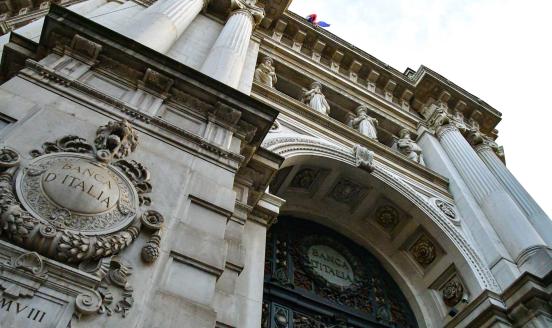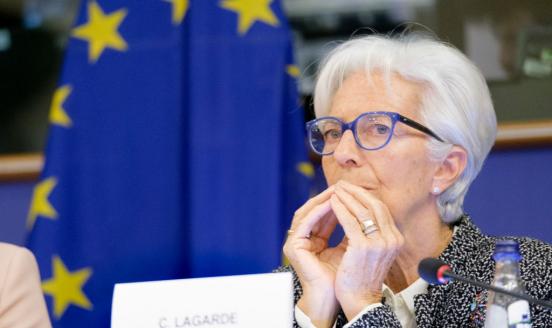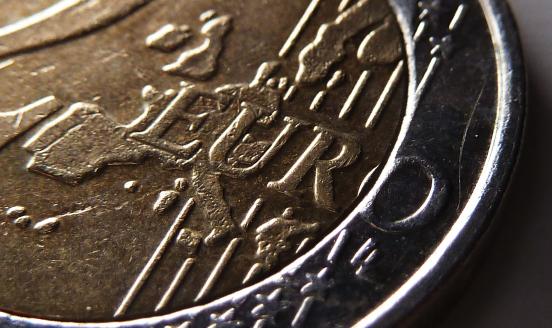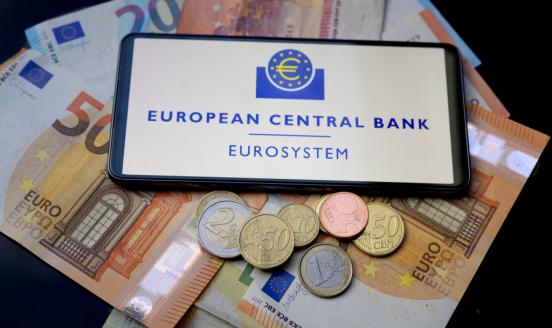Mini-BOT in the government programme of the Five Star Movement and the League
The economic evaluation of mini-BOT very much depends on its specific characteristics. Overall it appears to be a blend of an inferior security and in
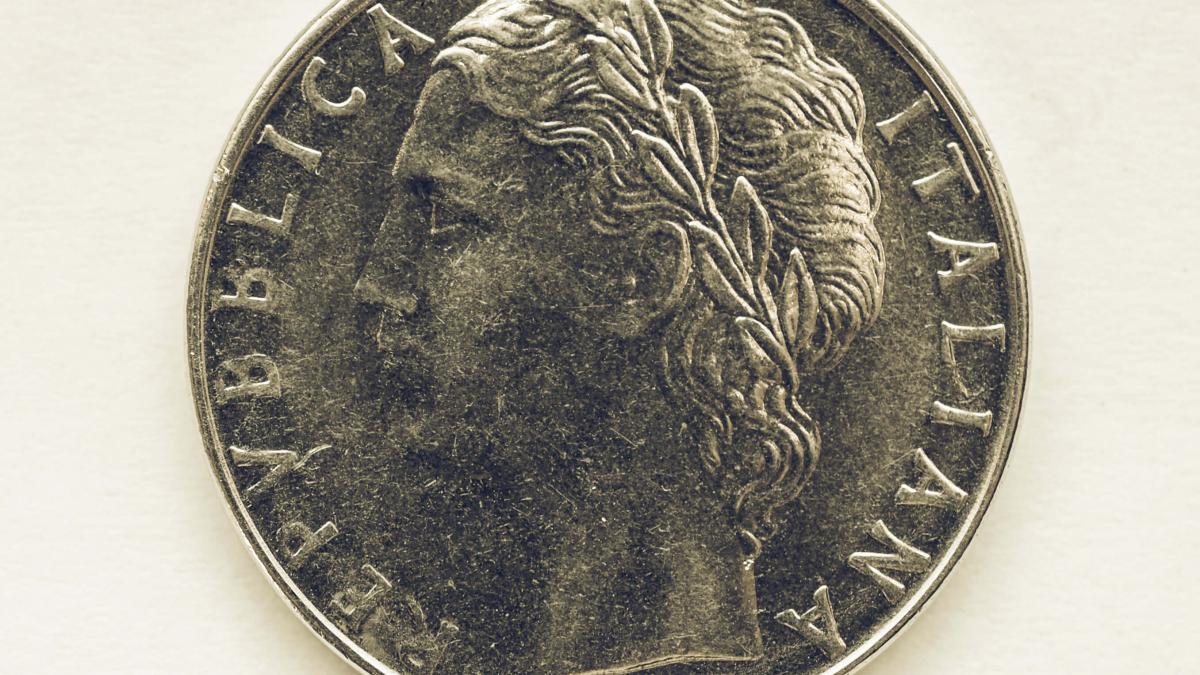
Introduction
Italians, fellow Europeans, savers and financial markets as well as the entire global community are eagerly looking at Italian political developments to try to understand the direction the country with the third largest economy in the euro area will take. Among the issues on which they are seeking more clarity, there is one that has taken different names over time: It started with the pompous and threatening denomination of parallel currency before it was more modestly renamed as the mini-BOT[1] by Claudio Borghi Aquilini of the League. Finally, it was further downgraded to “government bonds of small cut” in the latest “contract” agreed to as a basis of the new Italian government.
As we could not find an official English translation of the program agreed to between the League (La Lega) and the Five Star Movement (Movimento 5 Stelle or M5S), we provide below our translation of its part on mini-BOT[2], which proposes:
“... instruments such as government bonds of small cut, even by evaluating the definition of public debt in the appropriate instances.”
Description of the proposal (as far as we know)
We present here the mini-BOT proposal drawing principally from the book of Borghi Aquilini[3].
Mini-BOT are planned to be a type of IOU[4] (“I owe you”) that will be issued in paper form and small denominations (€1 to €500). Borghi even presents facsimiles of the new mini-BOT mimicking the euro banknote in his book. In a first step, the government would use mini-BOTs to pay public arrears. Mini-BOT, unlike traditional BOT, would pay no interest and would have no maturity.
The government would guarantee accepting mini-BOT for future tax payments, thereby implicitly safeguarding, according to its proponents, its value. Proponents also hope that mini-BOT would be used for payments between private agents. That being said, parties other than the government would not be obliged to accept mini-BOT. It is planned, however, to accept mini-BOT as legitimate mode of payment to settle energy bills or buy train tickets or other goods and services supplied by publicly owned companies.
The crucial idea of the mini-BOT is that it would be used as means of payment. Due to their character (paper form, small denominations) it is hoped that they will be spent locally, thereby stimulate growth in the Italian economy. Thus, Borghi sees mini-BOT as a tool of fiscal expansion without relying on the euro.
However, there is also another side to the mini-BOT which is important to highlight. Borghi explicitly points out that mini-BOT are seen as a necessary step to the abandonment of the euro by Italy: “It's true that mini-BOTs are in euro but once they will be widespread they will form a sort of ‘spare wheel’ that will make the transition to our currency much easier. [ ...] the day of the passage [to the new currency] it will suffice to declare the mini-BOT the new money.”
Literature and Precedents
Economic commentary on parallel currencies is mixed
Bossone and Cattaneo (in a paper (n.d.) as well as in a 2016 VoxEU article) in addition to Amato et al. (2016) already presented concepts similar to Borghi’s mini-BOT. Specifically, Bossone and Cattaneo (n.d.) have introduced “Tax Rebate Certificate” (TRC) while Amato et al. (2016) have proposed introducing the “geuro”[6]. These constructs share many, but not all, of the characteristics of mini-BOT.
Unlike Borghi on mini-BOT, Bossone and Cattaneo’s TRC will be circulated electronically (“provided that the payment infrastructure allows for [it]”) and TRC can be used to pay taxes with a delay of two years after their issue.
Bossone and Cattaneo summarize the nature of the TRC in one concise paragraph in their paper:
Essentially, the TRC proposal involves an inter-temporal resource transfer from the public to the private sector, through future tax rebates that can be liquidated in the market today (or at any time) at a discount. The liquidity so generated can be spent and support higher demand today. Increased spending, in turn, increases employment and output and generates the fiscal revenues needed to pay for the future tax rebates.
Bossone and Cattaneo argue that the spending stimulus by the TRC would lead to increased output and employment. Moreover, the two-year delay would be sufficient to increase tax revenues to offset future tax losses because of the TRC.
Amato et al. propose introducing a parallel electronic currency: the “geuro”. They argue that the “geuro” would have positive economic effects, similar to those claimed by the proponents of the Mini-BOT and the TRC. In the short and medium-term, the “geuro” would foster demand, growth, and employment. In the long-run, the parallel currency could transform the euro into a “common clearing currency” while the “geuro” would be used for payment between private agents. As long as the government could keep the credibility of the new currency, prices in euro or in a new currency would have no reason to differ.
Varoufakis’s “Plan B” (2017) foresaw the introduction of a parallel electronic currency set on the already existing identity card system. Any Greek person that had financial relations with the state, namely pensioners, public-sector workers, people on benefits, and government suppliers, could have used that payment system to settle financial transactions and tax payments not only between themselves and the state, but also with other private agents. The core idea was that individuals could use governmental arrears (taxes, pensions) to pay for daily goods and services independently of banks. Varoufakis claimed that this system would have would have expanded the fiscal space of the government, helped the poor and would have worked even in the situation of illiquid banks.
Financial analysts (Bertacche et al.) express a rather critical view about mini-BOT. All financial analysts mentioned in the cited article share a fear that the introduction of the mini-BOT, in their view a de facto parallel currency, would fuel concerns about Italy’s fiscal sustainability. The introduction of mini-BOT would also be regarded as a sign to start preparations to leave the euro, especially taking into account that talks of a possible exit of the euro area of a similar nature took place in Greece in 2015.
Cannata (2018) argues, contrary to Borghi and Bossone, that mini-BOT would count as debt. Regardless of its duration and financial characteristics, it would be hard not to qualify the Mini-BOT as security, and therefore, debt. At the same time, if mini-BOT were to be issued in paper form, they would fall into the “currency” category. Hence, Cannata believes that the mini-BOT is incompatible with European law if introduced in the form proposed in the papers cited above.
Past evidence is mixed
A recent Reuters article by Canepa (2018) provides an overview of past experiences of parallel currencies and state-backed IOUs which were quite mixed.
In the chaotic years of 2001-02, Argentina experimented with parallel currencies. Several Argentinian provinces as well as the federal government started to print new currencies in order to create an alternative to the official peso which was, at the time, bound to the US-Dollar and overvalued. Similarly to the planned mini-BOT, these parallel currencies were issued at a one-to-one exchange rate to the peso. Overall, the entire experiment did not work as expected as the new currencies did not devalue as hoped and therefore partially lost its purpose. Part of the reason, as pointed out by de la Torre, Yeyati, and Schmukler (2010) was that the demand for the parallel currencies was high in order to pay taxes since pesos were undersupplied. In the end, the parallel currencies were abandoned after a short amount of time.
In 2009, the State of California was in fiscal troubles and issued IOUs to pay short-term financial obligations. The IOUs paid an interest of 3.75% but the success of the IOUs was limited, as they were not generally accepted. In the end, the Californian state was able to raise revenues and cut expenses thereby meeting its fiscal obligations. The remaining IOUs were bought back by the government at par. The measure was not supposed to be permanent and it may have helped bridging over temporary difficulties.
A contiguous phenomenon to that of the nationally issued parallel currency mentioned above is often referred to as dollarization or euroisation, whereby a foreign currency - specifically the dollar or the euro - is used in parallel with the national currency. This is mostly done in cases where the national currency is affected by very high inflation. Martin Hellwig was recently quoted[7] as referring to the case of Israel when the shekel suffered very high inflation and the dollar was used for high value transactions. On the basis of his personal experience, rather than of a specific piece of research, he assessed the Israeli experience as unsustainable.
Economic analysis of the proposal
As mentioned above, the characteristics of the mini-BOT are not fully clear as of yet. Their economic consequences will depend on some critical characteristics and, even more importantly, on the message they could give on the continued participation of Italy in the euro area.
The most important issues to be clarified to understand what could be the impact of mini-BOT are dealt with below.
The first point to clarify is whether the mini-BOT would be more like money or a debt security.
The main characteristics of money are the following[8]:
- Zero nominal return,
- No convertibility at fixed price into any other asset (unlike in the gold standard), and thus no commitment of the issuer to redeem it at any point in time,
- Provision of liquidity services (medium of exchange),
- Numeraire, or unit of account (i.e. unit in which prices of all goods and services are denominated).
The main characteristics of securities are:
- Financial return (in nominal or real terms),
- Commitment of the issuer to redeem it, normally against money,
- Limited liquidity before redemption by means of exchanges in the market.
As argued below, from a technical point of view, the mini-BOT would be inferior as a security to the traditional BOT issued by the Italian state and, as money, they would be inferior to euro cash. One could indeed conclude that it is neither fish nor fowl.
While mini-BOT share with money the characteristic of having a zero financial return, they appear more like securities insofar as the other two characteristics mentioned above are concerned. In fact, the government would commit to take the mini-BOT as payment of taxes and possibly some other public goods or services. This means that there is a kind of redemption obligation, but not directly against euro, and therefore, of lower value. While the mini-BOT could have some liquidity by being exchanged in the market, the liquidity of this market is uncertain. Overall, mini-BOT are likely to be dominated by traditional securities, especially short-term ones. Unlike the mini variety, traditional BOTs provide a financial return. Their value in the market is anchored by clauses establishing early redemption in euro and they are exchanged in a reasonably liquid market. One alleged advantage of mini-BOT is their small denomination, but it is unlikely that this will offset their competitive disadvantage towards traditional BOT. It remains also to be seen which transaction costs will apply to mini-BOT and how they will compare with the very low transactions costs prevailing for traditional BOTs.
On the other hand, the mini-BOT’s ability to provide liquidity services is bound to be limited. Money’s appeal is that it can be exchanged at its nominal value against all goods and services produced in the national economy. For the euro this appeal is enhanced by the fact that it can be used all over the euro area and indeed also beyond it, given the euro’s international role. Mini-BOTs could only be exchanged at face value against future tax obligations towards the Italian state and possibly some goods and services provided by publicly owned Italian producers, which are relevant but still a tiny fraction of the overall transactions in an economy.
In case the mini-BOT could only be used to pay taxes after a certain period of time (as proposed by Bossone and Cattaneo’s TRC), mini-BOT holders would either be forced to trade them against goods and services in case of financial need (provided private parties would accept them), hold them until they could be used for tax payment, or sell them for euros (most likely at a discount). Mini-BOT would face the same dilemma other parallel currencies have faced in the past. If the mini-BOT devalued against the euro, their holders would hold them to lower their future tax burden or sell them at a discount to risk-loving traders. In the first case, the mini-BOT would be nothing else but another delayed debt repayment by the government. In the second, the mini-BOT would even shift wealth from budget-constrained tax-payers towards agents that can afford to speculate on the value of mini-BOT. If the value of the mini-BOT stayed close to the Euro, its potential economic benefits would not unfold. Local consumption might expand in the short-run as a one-time effect, but there would be no competitiveness gain as the wage level would remain unchanged. Therefore, the mini-BOT could suffer from its own success.
Overall, looking at them from a technical point of view, there seems to be no space between euro-cash and short-term securities to be filled in by the mini-BOT.
More important than the purely technical considerations would be the message that mini-BOT are just a preparation for a parallel currency and an eventual abandonment of the euro by Italy. This is unavoidable given the earlier declarations of both M5S and of the League as well as the physical similarity of mini-BOT to banknotes. In addition, it is obvious that market participants understand that Ital-exit proponents realize that they should camouflage preparations for Ital-exit in the eventually vain attempt to try and avoid anticipations by the market. A newly elected senator of the League made this point very clear in a book (Bagnai, 2016): Phase one: we will attack at dawn…[9] The exit must, as far as possible, hit without warning, coming unexpected”. Even if not stated explicitly in the program, the link between the mini-BOT and Ital-exit is strong in the view of savers and market participants, especially given that the League has suggested Italy should abandon the euro. This leads to a preoccupation of market participants fearing that the introduction of the mini-BOT is a preparation to introduce of a parallel currency.
A second important point to clarify about the mini-BOT is whether it would be a tool to increase the government deficit or not[10]. This is very clear in the proposal of Bossone and Cattaneo as well as in that of Amato [11] - even if they promise that any initial additional deficit would be repaid over time from the additional revenue deriving from the higher level of economic activity caused in turn by the initial fiscal expansion.[12] The increase of the deficit would result from the subsidy nature of TRC allocations (but the same argument could apply to the mini-BOT), which would be distributed without any counter-payment from its receivers. If the mini-BOT would lead to an increased deficit, they should be assessed because of this effect: would it be useful for Italy to decrease and possibly change the sign of its primary surplus? Of course, the fiscal intentions of the two parties that tried to form the new government would reinforce expectations that mini-BOT would fund additional deficits.
In the interpretation of the League supporters, instead there would be no increase of government deficits because of the presence of mini-BOT. In a way, a liability of the state in the form of unpaid invoices would be substituted by another liability in the form of mini-BOT. The advantage would be, in the view of its proponents, the higher liquidity of mini-BOT with respect to non-securitized claims towards the government. But the same point made above would become relevant here: in what way would mini-BOT be superior to other short-term securities like traditional BOTs? The government could pay its unpaid invoices by issuing more BOTs, with the advantage that these would be bought by willing investors and not forced upon creditors who would rather prefer to be paid in cash.
A third important point is to foresee whether the mini-BOT would trade at par (according to the League and Amato (2016)) or at a variable discount (as concluded by Bossone and Cattaneo). The points made above - namely limited liquidity, no financial return, no redemption in euro - lead to believe that they would trade at a discount, possibly a large and variable one. Changes in the size of the discount over time will basically depend on the amount issued, the debt sustainability prospects of Italy, the credibility of the Italian government to accept the mini-BOT in the future as tax payments, and, most importantly, the risk that the mini-BOT would just be the first phase of Ital-exit.
A fourth issue of more limited impact but still important, is whether the mini-BOT would be in electronic form, as designed in the Amato (2016) and Varoufakis plans, or in paper form, as envisaged by the League. In the latter case mini-BOT would favour the irregular and criminal economy, especially if there would be no limits to their acceptance for payments, as there exists for payment in cash. In addition, the paper form would of course further reduce the “moneyness” of mini-BOT: how to compare Euro-cash, with universal and constant purchasing power, which can take physical as well as many convenient electronic forms, with mini-BOT, disposing of limited exchangeability, possibly a variable discount and no handy electronic format?
Institutional analysis of the proposal
If mini-BOT became a legal tender, they would be illegal under European law, as only the European Central has the right to issue and print money in the euro area. The proponents of the Mini-BOT argue that these cannot be classified as legal tenders, since mini-BOT will not be officially backed by the government as legal tender but only by future tax revenue.
If unpaid invoices are substituted by mini-BOTs there would be an increase in the deficit/debt according to financial accounts. Commercial public debt is not included into public deficit and debt as they are measured for the Maastricht criteria. The impact of the mini-BOT will depend on whether the market will give more importance to the accounting treatment, whereby the deficit and the debt will increase, or to the economic considerations, whereby one form of public debt, like commercial debt, will be substituted by another form, like the mini-BOT, with no change on the overall debt level. The same uncertainty would arise if commercial debt was paid by issuing normal securities, so there would be no difference between the two forms of funding in this respect.
Conclusions
Based on our analysis, the following conclusions can be drawn:
- The outcome of the few precedents of parallel currencies is mixed, however they only lasted for a short period of time,
- While so called “fiscal currencies” are sometimes put forward as a panacea, more sober assessments show their limitation and even dangers,
- The economic evaluation of mini-BOT depends on their specific characteristics, overall they appear to be a blend of an inferior security and an inferior money,
- If mini-BOT would allow increasing the budget deficit, they should be evaluated as fiscal expansions, not just as a technical change in the funding of a given deficit,
- More important than their specific characteristics would be the message that mini-BOT would send about Ital-exit. Inevitably, given what the League and its representatives have said and written, mini-BOT would be seen as a first step in the exit of Italy from the euro, reinforcing denomination risk attached to Italian securities and thus increasing their yield, even if eventually Ital-exit and its huge negative effects were avoided,
- The mini-BOT would not break any EU or Italian law if they were just a security, but would be inconsistent with the existing European legal framework if they would become a parallel currency.
[1] Mini is a reference to the small denomination of the proposed instruments, BOT refer to “Buoni Ordinari del Tesoro”, i.e. Italian Treasury Bills with a maturity of 3, 6 or 12 months.
[2] The Italian version is as follows: “… strumenti quali titoli di stato di piccolo taglio, anche valutando nelle sedi opportune la definizione stessa di debito pubblico.”
[3] Claudio Borghi Aquilini is Responsabile Economico della Lega Nord (Economic Speaker for Lega Nord).
[4] IOU are an informal acknowledgment of debt.
[5] The Italian original is as follows: “È vero i minibot sono in euro ma una volta capillarmente diffusi costituiranno una specie di “ruota di scorta” che renderà molto più agevole l’ eventuale passaggio alla nostra moneta. …il giorno del passaggio [alla nuova moneta] basterà dichiarare i minibot nuova moneta.” Page 26.
[6] “geuro” stands for Greek-euro, since Amato et al. proposed the introduction of the parallel country in Greece.
[7] Eurointelligence of May 25 2018.
[8] Characteristics 1 and 2 derive from the “fiat” nature of non-metallic money; characteristics 3 and 4 are two of the canonical functions of money, the third one being the store of value function.
[9] The Italian original is: “La fase uno: attaccheremo all’alba…L’uscita deve, nella misura del possibile, cogliere alla sprovvista, giungendo inaspettata”. (Page 325).
[10] As mentioned below, Mini-BOT would in any case increase the deficit in accounting terms, but the effects on the deficit measured according to economic criteria may be different.
[11] Bossone and Cattaneo (n.d.), Amato (2016)
[12] As pointed out by Ramey (2011), fiscal multipliers are difficult to estimate and it “is a nebulous concept that depends very much on the type of government spending, its persistence, and how it is financed.” Therefore, it remains highly unclear to which extend a fiscal stimulus can pay for itself.
References
M. Amato, L. Fantacci, D. B. Papadimitriou, G. Zezza. Going Forward from B to A? Proposals for the Eurozone Crisis. Economies 2016, 4, 18. 2016.
A. Bagnai. Il Tramonto dell’ euro. Come e perché la fine della moneta unica salverebbe democrazia e benessere in Europa. Imprimatur. 2016.
M. Bertacche, J. Ainger and C. Ryan. Why Mini-BOTs Loom Large for Investors in Italy Assets. Bloomberg. May 22 2018. https://www.bloomberg.com/news/articles/2018-05-21/why-mini-bots-loom-big-for-investors-in-italy-assets-quicktake. Accessed 01/06/2018.
C. Borghi Aquilini. Mini Bot, Sovranità e Democrazia. https://www.salvinipremier.it/t_minibot.asp?l2=1973. Accessed 01/06/2018.
B. Bossone and M. Cattaneo. “Fiscal Money” to End the Unending Crisis. Mimeo. www.eunews.it/wp-content/uploads/2016/11/Bossone-Cattaneo.docx. Accessed 01/06/2018.
B. Bossone and M. Cattaneo. ‘Helicopter tax credits’ to accelerate economic recovery in Italy (and other Eurozone countries). VoxEU. January 05, 2016. https://voxeu.org/article/fiscal-stimulus-helicopter-tax-credits. Accessed 01/06/2018.
F. Canepa. ECB official skeptical of Italy's alternative cash plan. Reuters. May 18, 2018. https://www.reuters.com/article/italy-politics-ecb/ecb-official-sceptical-of-italys-alternative-cash-plan-idUSL5N1SP4TC. Accessed 01/06/2018.
M. Cannata. Mini-Bot o Ccf: la grande i llusione. La Voce Info. May 26, 2018. http://www.lavoce.info/archives/53300/mini-bot-o-ccf-la-grande-illusione/. Accessed 01/06/2018.
V.A. Ramey. Can Government Purchases Stimulate the Economy? Journal of Economic Literature, vol. 49, no. 3. September 2011.
A. d. l. Torre, E. L. Yeyati, S. Schmukler, Varieties of internal devaluation: Peripheral Europe in the Argentine mirror. VoxEU. March 06, 2010. https://voxeu.org/article/argentina-all-over-again-lessons-europe. Accessed 01/06/2018.
Y.nVaroufakis. 2nd anniversary of the OXI vote & our parallel payments system: Its importance confirmed by the oligarchic press’ continuing, ritualistic distortions. July 5, 2017. https://www.yanisvaroufakis.eu/2017/07/05/2nd-anniversary-of-the-oxi-vote-our-parallel-payments-system-its-importance-confirmed-by-the-oligarchic-press-continuing-ritualistic-distortions/. Accessed 01/06/2018.
